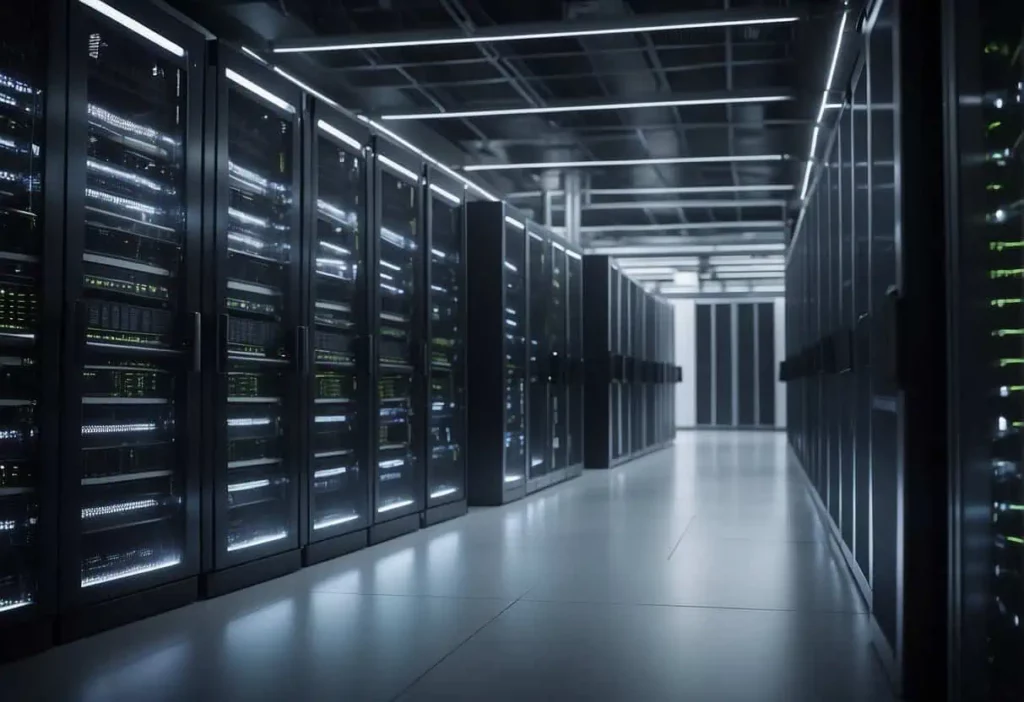A hybrid data center is an advanced IT environment that merges the traditional on-premises data centers with cloud-based services. This architecture offers organizations the best of both worlds: the security and control of a private data center with the cost-effectiveness, scalability, and flexibility of public cloud services. In essence, a hybrid data center allows for the seamless integration of private and public resources, enabling businesses to distribute their workloads across multiple environments according to performance, cost, and compliance requirements.
The evolution from traditional data centers to hybrid models is driven by the need to support complex and dynamic business applications. As enterprises pursue digital transformation, the demand for more agile IT infrastructure increases. Hybrid data centers cater to this need by facilitating rapid scaling of computing resources, fostering innovation, and providing a bridge to modernize legacy systems with minimal disruption. Additionally, they facilitate improved disaster recovery strategies and backup solutions by utilizing the cloud’s distributed nature.
Key Takeaways
- Hybrid data centers combine private and public infrastructure, optimizing performance and costs.
- They enable businesses to scale resources and innovate while maintaining system legacy.
- A focus on integration and security is crucial for efficient and reliable hybrid operations.
Evolution of Data Centers

The data center landscape has undergone considerable change, transitioning from traditional architecture to flexible, hybrid models, deeply integrated with cloud computing. This evolution signifies a transformative approach to data storage and processing, influenced by the need for scalability, cost-efficiency, and performance.
From Traditional to Hybrid Models
Traditional data centers were once the backbone of enterprise IT, often characterized by significant physical infrastructures managed on-premises. Hybrid models have emerged as a paradigm shift, incorporating both on-premises resources and cloud services to create a more dynamic and flexible environment. This allows for on-demand resource allocation and improved disaster recovery protocols, ensuring continuity and scalability.
Role of Cloud Computing in Data Centers
Cloud computing has been integral to the evolution of data centers, providing the framework for hybrid architectures. It injects agility and scalability into the data center model, as resources can be consumed as a service. Cloud-centric data centers, both public and private clouds, are crucial for supporting big data analytics and Internet of Things (IoT) applications, where massive amounts of data are processed and analyzed.
| Cloud Type | Attributes | Use Cases |
|---|---|---|
| Public Cloud | Broad scalability, pay-as-you-go | Web-based applications, storage |
| Private Cloud | Enhanced security, customizability | Business-critical operations |
| Hybrid Cloud | Flexibility, cost-effectiveness | Mixed-sensitivity workload deployment |
On-Premises vs. Public Cloud Pros and Cons
Choosing between on-premises and public cloud solutions often comes down to assessing specific needs and use cases, each with its distinct advantages and limitations.
On-Premises
- Pros: Complete control over physical servers, increased security, and specific compliance standards are more easily met.
- Cons: Requires large capital expenditure, less scalability, and involves complex disaster recovery planning.
Public Cloud
- Pros: Offers significant flexibility, generally lower costs with a pay-as-you-go model, and eliminates the need for physical management of servers.
- Cons: Potential security concerns, possible latency issues, and may lead to vendor lock-in challenges.
Hybrid data centers effectively combine the strengths of both on-premises and cloud-based solutions, often proving to be the most pragmatic and efficient approach for a range of business models.
Hybrid Data Center Architecture

Hybrid data center architecture blends on-premises infrastructure with cloud services, providing a flexible and scalable environment for application and data deployment.
Components of a Hybrid Data Center
A hybrid data center integrates various components that work cohesively to enable seamless operation. Physical infrastructure that includes traditional data center resources and multi-cloud environments, where resources are distributed across private and public clouds, form the backbone of this architecture. Virtualization technologies and software-defined networking (SDN) play pivotal roles in interconnecting and managing these diverse components.
Network Infrastructure and Connectivity
The network infrastructure in a hybrid data center must be robust enough to ensure reliable connectivity between on-premises and cloud-based resources. This involves deploying advanced networking devices and employing secure protocols to support high-speed data transfer and real-time access to applications, fostering an elastic operational environment.
Storage and Processing
Storage solutions within a hybrid data center are designed to provide both scale and flexibility. They facilitate data management across physical and cloud-based systems, while processing power is dynamically allocated to meet the demands of various workloads, leveraging the efficiency of on-premises servers and the scalability of cloud computing.
Virtualization and Automation
Virtualization technology is a cornerstone of hybrid data centers, abstracting physical hardware into multiple virtual machines or environments. It enables more efficient utilization of resources and simplifies operations. Coupled with automation, this technology accelerates deployment, enhances performance, and ensures consistency across both physical and cloud domains.
Server Deployment Strategies
Effective server deployment strategies in a hybrid data center involve choosing the right mix of on-premises and cloud-based servers. Decisions are driven by factors such as cost, performance, security, and compliance, enabling businesses to position their server infrastructure optimally for current and future needs.
Hybrid Cloud Operations

In a hybrid cloud data center, optimal performance hinges on the effective management of workloads and the ability to scale and adjust quickly. Central to this is the streamlining of orchestration processes across diverse infrastructures.
Workload Management and Distribution
Hybrid cloud operations demand strategic workload management to ensure tasks are performed efficiently. The distribution of workloads is based on various factors:
- Resource requirements: Assigning tasks to the private or public component based on computational needs.
- Regulatory compliance: Sensitive workloads may need to reside on-premises to comply with data sovereignty laws.
- Performance optimization: Services may be allocated to cloud infrastructures that offer the best performance for specific tasks.
Agility and Scalability in Hybrid Environments
Hybrid environments blend the robustness of on-premises infrastructure with the scalability of the cloud, granting businesses unprecedented agility. This agility manifests in:
- Rapid resource allocation: Scaling resources up or down in response to demand fluctuation.
- Dynamic response: Quick adaptation to changes in the marketplace or operational requirements.
Unified Management and Orchestration
For seamless operations, hybrid cloud ecosystems rely on unified management and orchestration to oversee disparate infrastructures as a cohesive unit. Essential aspects include:
- Automated workflows: Simplifying complex operations and reducing human error.
- Cross-platform oversight: Maintaining visibility and control across both cloud and on-premises environments.
- Consistent policy enforcement: Applying uniform security and operational policies across all infrastructures.
Through these strategies, hybrid cloud operations facilitate balanced workload distribution, foster agility and scalability, and maintain control through unified orchestration practices.
Security in Hybrid Data Centers
Hybrid data centers integrate on-premises infrastructure with cloud services, posing unique challenges to data protection, compliance, and cybersecurity. These environments demand advanced security measures to ensure the safety of sensitive data across diverse platforms.
Data Protection and Compliance
The protection of sensitive data in hybrid data centers requires robust compliance strategies. Adherence to regulations such as GDPR, HIPAA, and PCI-DSS is mandatory. Organizations must implement:
- Encryption: Data should be encrypted both at rest and in transit.
- Access Controls: Define and enforce who can access which data, ensuring that only authorized personnel have entry to sensitive information.
Cybersecurity Challenges
Hybrid data centers face a suite of cybersecurity challenges:
- Complex Threat Landscape: The integration of different environments expands the attack surface.
- Ransomware: As a prevalent threat, organizations must employ advanced security solutions like Next-Generation Firewalls to prevent intrusions and data breaches.
Granular Visibility for Security
Granularity in visibility is pivotal for hybrid data center security:
- Monitoring Tools: Deploy solutions that provide continuous monitoring across all environments.
- Anomaly Detection: Implement systems capable of detecting deviations in behavior, which could indicate a security event.
Integration and Interoperability
In the landscape of hybrid data centers, a seamless integration and interoperability among on-premises, public, and private clouds are crucial. These strategies enable organizations to leverage the full spectrum of cloud resources effectively.
Private and Public Cloud Integration
Private and public cloud integration is essential to creating a cohesive hybrid data center. It necessitates the use of sophisticated tools and standard protocols to ensure data integrity and security. For instance, data migration tools help in the secure transfer of data at optimal transfer speeds without compromising application availability during the migration process.
- Tools: Utilize advanced software that supports standard protocols and maintains data integrity across environments.
- Challenges: Address potential bandwidth limitations and ensure minimum impact on operations.
On-Premises and Cloud Resources Synergy
The synergy between on-premises infrastructure and cloud resources requires an architecture that enables data and application interoperability. Organizations must:
- Evaluate: Assess how on-premises data centers can be extended to the cloud, maintaining consistency and security.
- Implement: Construct a roadmap for gradually migrating on-premises resources to a hybrid cloud model, if that aligns with the organization’s IT strategy.
Data integration is fundamental to maintaining the consistency and security of information as it moves between on-premises and cloud environments. Ensuring high levels of interoperability will contribute to the robustness and efficiency of hybrid data center deployments.
Optimizing Hybrid Data Center Efficiency
Efficiency in hybrid data centers hinges on balancing cost-effective solutions with optimized IT infrastructure to achieve cost savings and operational excellence.
Cost Control and Reduced Expenditure
Hybrid data centers represent a fusion of on-premises infrastructure and cloud services, offering a cost-efficient way to manage data and applications. Specifically, they allow for a pay-as-you-go model, reducing upfront capital expenditure and enabling businesses to scale resources according to demand. By leveraging cloud bursting, organizations can manage sudden spikes in data processing needs without maintaining costly excess on-premises capacity.
IT Infrastructure and Resource Optimization
An optimized IT infrastructure is central to an efficient hybrid data center. This means utilizing solutions like IBM’s Turbonomic to automatically allocate resources in real-time, ensuring optimal performance of applications. Additionally, software-defined infrastructure (SDI) allows for the dynamic management of computing environments, ensuring resources are precisely tailored to workload demands. This strategic approach not only maximizes efficiency but also contributes to significant cost savings by reducing wasteful overprovisioning.
Business and Technical Considerations
When planning a hybrid data center, organizations must meticulously balance their business objectives with the technical capabilities at their disposal. Identifying the right blend of cloud-based and on-premises solutions is crucial to cater to current server demands and data storage requirements while anticipating future growth.
Aligning with Business Needs and Goals
A hybrid data center strategy should directly correspond to an organization’s overarching business needs. This alignment entails an in-depth analysis to determine how various cloud models—public, private, and hybrid—can support these needs. For instance:
- Data Sensitivity and Regulatory Compliance: Certain data may not be permitted to reside on public clouds due to regulatory restrictions. Organizations must carefully assess where and how their sensitive data is stored and managed.
- Cost Management: Cost considerations play a significant role in aligning IT infrastructure with fiscal realities. Businesses must compare the cost implications of on-premises versus cloud solutions, considering both CapEx and OpEx models.
Considering Scalability for Business Growth
The ability to scale IT resources in response to server demand is fundamental to business growth. A well-designed hybrid data center can provide this scalability by:
- On-Demand Resources: Enabling organizations to tap into cloud resources as needed, thus accommodating fluctuating workloads without over-investing in physical infrastructure.
- Future-Proofing: Transparent integration between cloud services and on-premises data centers ensures that as the business expands, its data management capabilities can grow seamlessly, avoiding costly overhauls or downtime.
Trends and Future Directions
The evolution of hybrid data centers is shaped by the integration of edge computing, serverless architectures, and advanced networking. These components are pivotal to driving innovation and efficiency in IT infrastructures.
Edge Computing and Hybrid Data Centers
Edge computing decentralizes processing, bringing computation closer to data sources. This reduces latency and bandwidth use. Hybrid data centers are incorporating edge computing to deliver faster insights and responses, enabling real-time applications in industries such as healthcare, manufacturing, and retail. They strategically distribute resources between on-premises, edge, and cloud environments, optimizing performance and cost.
Serverless Applications and the Hybrid Cloud
Serverless applications abstract the server layer, allowing developers to focus on code rather than infrastructure management. Hybrid cloud environments are increasingly adopting serverless computing paradigms to enhance scalability and efficiency. This approach can reduce operational costs as users only pay for resources consumed during the execution of applications.
Networking Trends: SDN and API Integration
Software-defined networking (SDN) transforms network management, with programmable networks that adapt to application needs. It improves network flexibility and control, facilitating the efficient operation of hybrid data centers. API integration is fundamental to SDN strategies, enabling seamless communication between disparate software and hardware components. APIs allow for automated network configurations and simplify complex tasks by interfacing different technologies within the hybrid data center ecosystem.
Industry-Specific Impacts
Hybrid data centers are reshaping industries by enabling diversified IT frameworks, which differ in their impact and application. The following subsections delve into how the healthcare sector is adapting to these changes and the implications for a remote workforce.
Healthcare Sector Adaptation
In the healthcare industry, hybrid data centers facilitate the storage and processing of large volumes of sensitive patient data. They maintain a balance between on-premises infrastructure for compliance and control, and cloud solutions for enhanced data mobility and resource scalability. Entities must navigate stringent regulatory environments like HIPAA, ensuring patient data is both accessible and secure.
- Data Access and Protection: Engagement of cloud services for computational needs and data analytics without undermining patient privacy.
- Regulatory Compliance: Maintenance of on-premises data centers to meet specific healthcare regulations.
Implications for Remote Workforce
The adaptation of hybrid data centers is critical for supporting a remote workforce, allowing employees to access necessary resources from any location. Organizations must ensure a seamless and secure workflow, managing data across multiple platforms while considering factors like network reliability and cybersecurity threats.
- Operational Agility: Multi-cloud deployments enable employees to work efficiently from disparate geographic locations, enhancing productivity.
- Security and Control: Keeping sensitive data and critical applications on-premises or in a private cloud, mitigating the risks associated with remote access.
Frequently Asked Questions
Hybrid data center architecture is reshaping the way organizations manage their IT infrastructure. These FAQs address common queries regarding integration, benefits, data management, security, and scalability within hybrid data centers.
How does hybrid data center architecture integrate with traditional on-premises infrastructure?
Hybrid data centers bridge on-premises infrastructure with cloud-based services, allowing data and applications to flow seamlessly between the two. This integration is accomplished through networking solutions that connect traditional IT environments with private and public clouds.
What are the primary benefits of utilizing a hybrid cloud data center?
The primary benefits of a hybrid cloud data center include greater flexibility, cost efficiency, and scalability. They provide the option to use public cloud resources for fluctuating workloads while keeping sensitive operations secure on-premises.
Can you explain how data management is handled in a hybrid data center environment?
In a hybrid data center, data management involves orchestration tools and software-defined networking, which help in coordinating resources across on-premises and cloud environments. This setup enables centralized management of data and applications irrespective of their location.
What are the key security considerations when operating a hybrid data center?
Key security considerations involve maintaining visibility and control over the expanded attack surface. Consistent security policies and advanced cybersecurity solutions are essential to protect data across both cloud-based and on-premises infrastructures.
How does edge computing differ from hybrid cloud data centers, and what are their respective use cases?
Edge computing processes data at the network’s edge, near the data source, which reduces latency. Hybrid cloud data centers, in contrast, rely on a centralized model that can harness both local and cloud resources. Edge computing is ideal for real-time analytics, while hybrid cloud data centers support flexible resource allocation.
What strategies can be employed to ensure seamless scalability in a hybrid data center?
To ensure seamless scalability in a hybrid data center, organizations should adopt scalable architectures like microservices and implement automated, scalable cloud services. Elastic resources in public clouds can be utilized to manage workload spikes without impacting on-premises infrastructure.
Last Updated on February 12, 2024 by Josh Mahan




